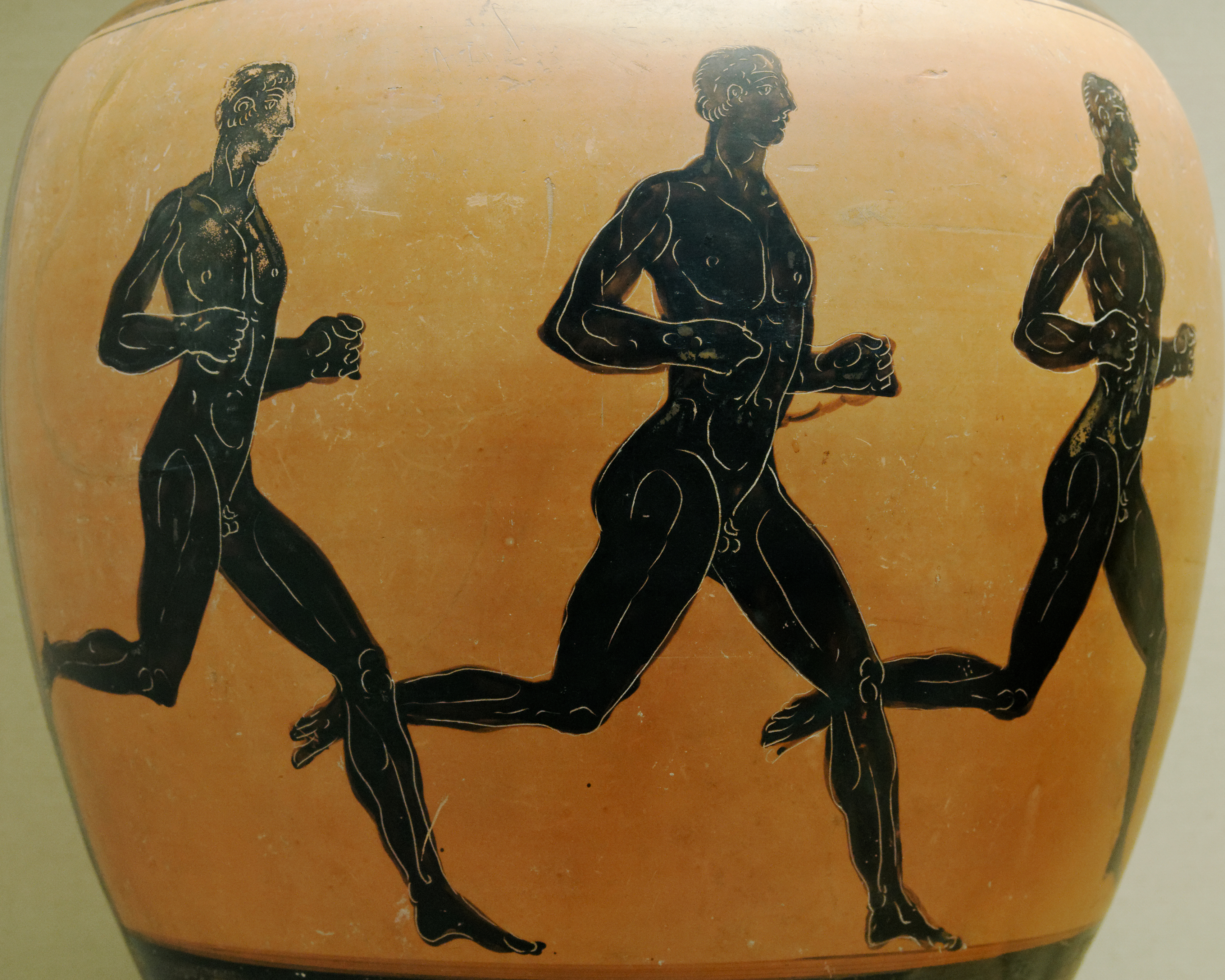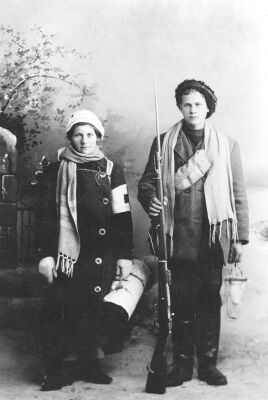|
Juho Halme
Johan Valdemar "Juho" Halme (born Johan Valdemar Eliasson; 24 May 1888 – 1 February 1918) was a Finnish track and field athlete who competed in the 1908 and 1912 Summer Olympics and won six Finnish championships in various events in 1907–1916. He died during the Finnish Civil War. He was born and died in Helsinki. Athletics Olympics Halme represented Finland in two Olympic Games. National Halme broke two Finnish records in athletics: * 16 May 1912, javelin throw, 56.54 * 16 June 1912, triple jump, 13.95 He also became the second Finn to throw javelin over 60 meters. He won six golds in the Finnish Championships in Athletics: * triple jump in 1907, 1910 and 1911 * long jump in 1912 * javelin throw in 1914 * pentathlon in 1916 Halme competed in the British AAA Championships and finished second behind Ivar Sahlin in the triple jump event and second behind Mór Kóczán in the javelin at the 1914 AAA Championships. He was the secretary of Helsingin Reipas in 1906–1 ... [...More Info...] [...Related Items...] OR: [Wikipedia] [Google] [Baidu] |
Athlete
An athlete is most commonly a person who competes in one or more sports involving physical strength, speed, power, or endurance. Sometimes, the word "athlete" is used to refer specifically to sport of athletics competitors, i.e. including track and field and marathon runners but excluding e.g. swimmers, footballers or basketball players. However, in other contexts (mainly in the United States) it is used to refer to all athletics (physical culture) participants of any sport. For the latter definition, the word sportsperson or the gendered sportsman or sportswoman are also used. A third definition is also sometimes used, meaning anyone who is Physical fitness, physically fit regardless of whether they compete in a sport. Athletes may be professional sports, professionals or amateur sports, amateurs. Most professional athletes have particularly well-developed physiques obtained by extensive physical training and strict exercise, accompanied by a strict dietary regimen. Definition ... [...More Info...] [...Related Items...] OR: [Wikipedia] [Google] [Baidu] |
Finnish Championships In Athletics
The Finnish Athletics Championships, which are known as ''Kalevan kisat'' in Finnish, were first held in Tampere in 1907. Since then, they have been held in a different location every year. In the beginning, women were not allowed to compete in the Finnish Championships. The Kaleva Cup In 1909, the personnel at the life insurance company ''Kaleva'' donated a trophy called the ''Kalevan malja'' or the Kaleva Cup to be awarded to and kept for until the next Championships by the team accumulating the most points during the competition. In 1909, the Finnish Championships started to be informally referred to as the ''Kaleva Games'' because of the name of the cup. At the Championships held in Pori in 1915, the magazine Suomen Urheilulehti started to call the competition the ''Kaleva Games'' in its headlines. In 1937, at the Championships held in Vyborg, the Finnish athletics federation called Finnish Athletics (''Suomen Urheiluliitto'' in Finnish) formally declared the name of the Fi ... [...More Info...] [...Related Items...] OR: [Wikipedia] [Google] [Baidu] |
1888 Births
Events January * January 3 – The great telescope (with an objective lens of diameter) at Lick Observatory in California is first used. * January 12 – The Schoolhouse Blizzard hits Dakota Territory and the states of Montana, Minnesota, Nebraska, Kansas and Texas, leaving 235 dead, many of them children on their way home from school. * January 13 – The National Geographic Society is founded in Washington, D.C. * January 19 – The Battle of the Grapevine Creek, the last major conflict of the Hatfield–McCoy feud in the Southeastern United States. * January 21 – The Amateur Athletic Union is founded by William Buckingham Curtis in the United States. * January 26 – The Lawn Tennis Association is founded in England. February * February 27 – In West Orange, New Jersey, Thomas Edison meets with Eadweard Muybridge, who proposes a scheme for sound film. March * March 8 – The Agriculture College of Utah (later Utah State University) i ... [...More Info...] [...Related Items...] OR: [Wikipedia] [Google] [Baidu] |
War Victims Of Finland 1914–1922
War Victims of Finland 1914–1922 ( ) is a database that contains the names and information of more than 35,000 Finnish war dead between 1914 and 1922. The database was opened in 2002 and it is published by the National Archives of Finland. The registry contains victims of World War I (1914–1918), the Finnish Civil War The Finnish Civil War was a civil war in Finland in 1918 fought for the leadership and control of the country between Whites (Finland), White Finland and the Finnish Socialist Workers' Republic (Red Finland) during the country's transition fr ... (1918) and the so-called Kinship Wars (1918–1922). About 97 per cent of the names are casualties of the civil war or its aftermath. Persons in the registry can be searched by surname, first name, date of birth, occupation, place of census registration, place of residence, place of death, and by the cause of death. The research version of the database has more information than the simplified internet version. E ... [...More Info...] [...Related Items...] OR: [Wikipedia] [Google] [Baidu] |
List Of Olympians Killed In World War I
A total of 143 Olympians are known to have been killed during World War I. See also * List of international rugby union players killed in World War I Notes A.This includes Hermann von Bönninghausen and Paul Berger, who both died following the war of complications from their war injuries. B.The country A country is a distinct part of the world, such as a state, nation, or other political entity. When referring to a specific polity, the term "country" may refer to a sovereign state, state with limited recognition, constituent country, ... the individual competed for at the time. References {{DEFAULTSORT:Olympians Killed In World War I Lists of people killed in World War I Killed In World War I Lists of sportspeople who died in wars ... [...More Info...] [...Related Items...] OR: [Wikipedia] [Google] [Baidu] |
Red Guards (Finland)
The Red Guards (, ; ) were the paramilitary units of the labour movement in Finland during the early 1900s. The Red Guards formed the army of Red Finland and were one of the main belligerents of the Finnish Civil War in 1918. The Red Guards were first established during the 1905 general strike but disbanded a year later until they were re-established after the February Revolution in 1917. The combined strength of the Red Guard was about 30,000 at the beginning of the Civil War, peaking at between 90,000 and 120,000 during the course of the conflict, including more than 2,000 members of the Women's Guards. The Red Guards were defeated in Finland by the Whites in May 1918 and around 80,000 were captured as prisoners of war, where 12,000 to 14,000 of them died in the post-war prison camps due to disease, malnutrition, and execution. Most Red Guards were pardoned by the Government of Finland in late 1918. Approximately 10,000 to 13,000 Red Guards fled to Soviet Russia wher ... [...More Info...] [...Related Items...] OR: [Wikipedia] [Google] [Baidu] |
Helsinki Cathedral
Helsinki Cathedral (, ; , ) is the Finnish Evangelical Lutheran cathedral of the Diocese of Helsinki, located in the neighborhood of Kruununhaka in the centre of Helsinki, Finland, at the Senate Square. The church was originally built from 1830 to 1852 as a tribute to the Grand Duke of Finland, Emperor Nicholas I of Russia. It was also known as St Nicholas's Church (, ) until Finland declared its full independence in 1917. It is a major landmark of the city, and one of the most famous historical structures in Finland as a whole when viewed globally. Description A distinctive landmark in the Helsinki cityscape, with its tall, green dome surrounded by four smaller domes, the building is in the neoclassical style. It was designed by Carl Ludvig Engel as the climax of his Senate Square layout: it is surrounded by other, smaller buildings designed by him. The church's plan is a Greek cross (a square centre and four equilateral arms), symmetrical in each of the four cardinal ... [...More Info...] [...Related Items...] OR: [Wikipedia] [Google] [Baidu] |
White Guard (Finland)
The White Guard, officially known as the Civil Guard (, ; ; ), was a voluntary militia, part of the Finnish Whites movement, that emerged victorious over the socialist Red Guards in the Finnish Civil War of 1918. They were generally known as the "White Guard" in the West due to their opposition to the "communist" Red Guards. In the White Army of Finland many participants were recruits, draftees and German-trained Jägers – rather than part of the paramilitary. The central organization was named the White Guard Organization, and the organization consisted of local chapters in municipalities. The Russian Revolution of 1905 led to social and political unrest and a breakdown of security in Finland, which was then a Grand Duchy under the rule of the Russian Tsar. Citizen militias formed as a response, but soon these would be transformed along political (left-right) lines. The Russian Revolution of 1917 and the subsequent independence of Finland (declared in December 1917) a ... [...More Info...] [...Related Items...] OR: [Wikipedia] [Google] [Baidu] |
Yrjö Halme
Yrjö, a masculine Finnish given name that is the equivalent of George, may refer to: * Yrjö von Grönhagen (1911–2003), Finnish anthropologist * (1903–1956), Finnish poet * Yrjö Kilpinen (1892–1959), Finnish composer * Yrjö Kokko (1903–1977), Finnish author * Yrjö Kukkapuro (1933–2025), Finnish interior architect and furniture designer * Yrjö Lindegren (1900–1952), Finnish architect * Yrjö Mäkelin (1875–1923), shoemaker * Yrjö Nikkanen (1914–1985), Finnish athlete * Yrjö Sakari Yrjö-Koskinen (1830–1903), freiherr, senator, professor, historian, and politician * Yrjö Sirola (1876–1936), Finnish writer and socialist politician * Yrjö Sotamaa, Finnish architect * Yrjö Väisälä (1891–1971), Finnish astronomer and physicist * Yrjö Vartia (born 1946), economist * Yrjö Wichmann (1868–1932), Finnish linguist See also * *George (given name) George () is a masculine given name derived from the Greek langua ... [...More Info...] [...Related Items...] OR: [Wikipedia] [Google] [Baidu] |
Suomen Urheilulehti
''Urheilulehti'' is a popular weekly Finnish sports magazine. It is the second oldest sports journal in the World (after Italian ''La Gazzetta dello Sport''). History and profile ''Urheilulehti'' was founded by Ivar Wilskman in January 1898. The magazine is published by A-lehdet Oy weekly on Thursdays. Its headquarters is in Helsinki. The current editor-in-chief of ''Urheilulehti'' is Jukka Rönkä. The sports Library has all issues of the magazine. In 2013, ''Urheilulehti'' had a circulation of 31,453 copies. Currently as of 2024, Urheilulehti is published by Sanoma Media Finland, which bought it in 2017. In 2018, the average weekly reader number of Urheilulehti was 115,000. mediaauditfinland.fi See also |
1914 AAA Championships
The 1914 AAA Championships was the 1914 edition of the annual outdoor track and field competition organised by the Amateur Athletic Association (AAA). It was held from 3–4 July 1914 at the Stamford Bridge (stadium) in London, England. The attendance was described as a record attendance of around 13,000, despite estimates that were higher the year previous. The Championships consisted of 20 events and covered two days of competition for the first time, following the introduction of four new events. The new disciplines introduced were the 440 yards hurdles, javelin throw, discus throw and triple jump. It was also the last Championships for five years due to the outbreak of war War is an armed conflict between the armed forces of states, or between governmental forces and armed groups that are organized under a certain command structure and have the capacity to sustain military operations, or between such organi ... shortly after the 1914 championships. Results ... [...More Info...] [...Related Items...] OR: [Wikipedia] [Google] [Baidu] |





